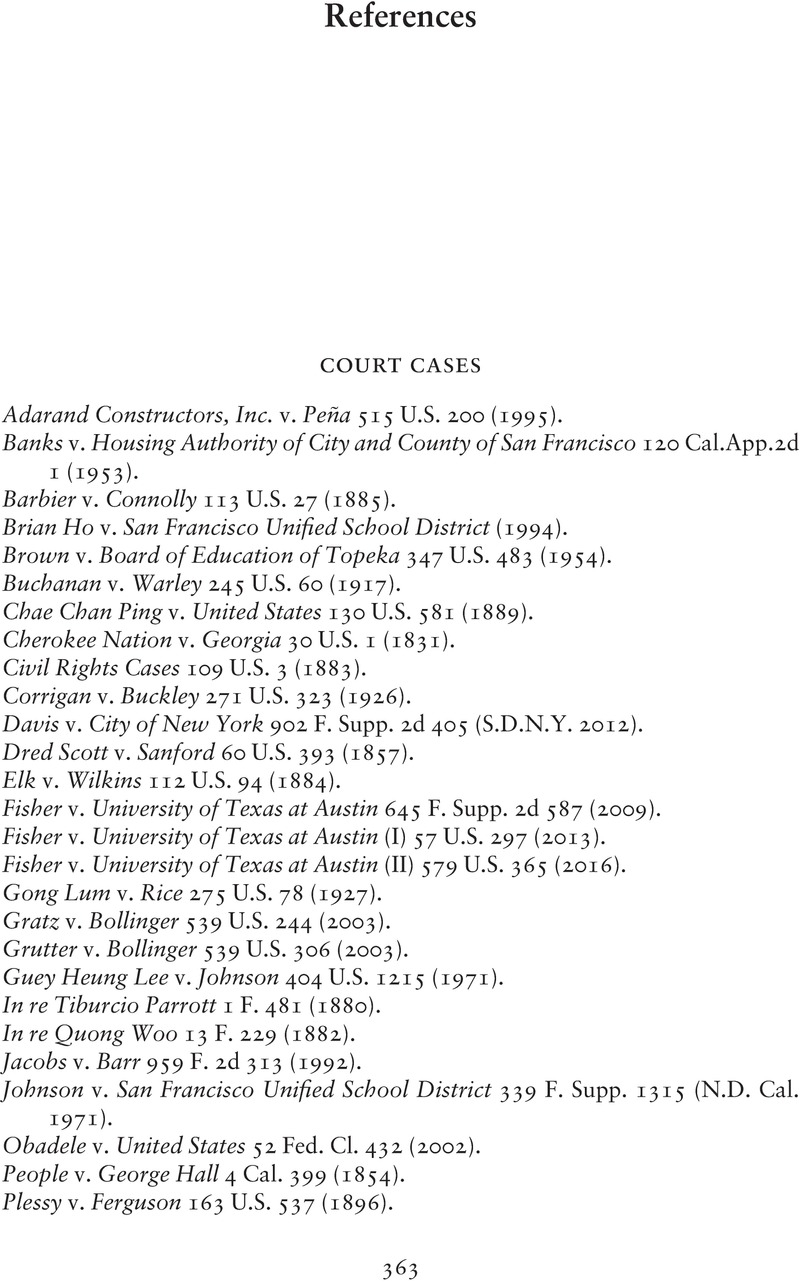Book contents
- Asian Americans in an Anti-Black World
- Asian Americans in an Anti-Black World
- Copyright page
- Dedication
- Contents
- Acknowledgments
- Introduction Better Asians than Blacks
- Part One Exclusion/Belonging
- Part Two Ostracism/Initiation
- Part Three Solidarity/Disavowal
- Coda Asian Americans and Anti-Blackness
- References
- Index
- References
References
Published online by Cambridge University Press: 22 June 2023
- Asian Americans in an Anti-Black World
- Asian Americans in an Anti-Black World
- Copyright page
- Dedication
- Contents
- Acknowledgments
- Introduction Better Asians than Blacks
- Part One Exclusion/Belonging
- Part Two Ostracism/Initiation
- Part Three Solidarity/Disavowal
- Coda Asian Americans and Anti-Blackness
- References
- Index
- References
Summary

- Type
- Chapter
- Information
- Asian Americans in an Anti-Black World , pp. 363 - 390Publisher: Cambridge University PressPrint publication year: 2023



